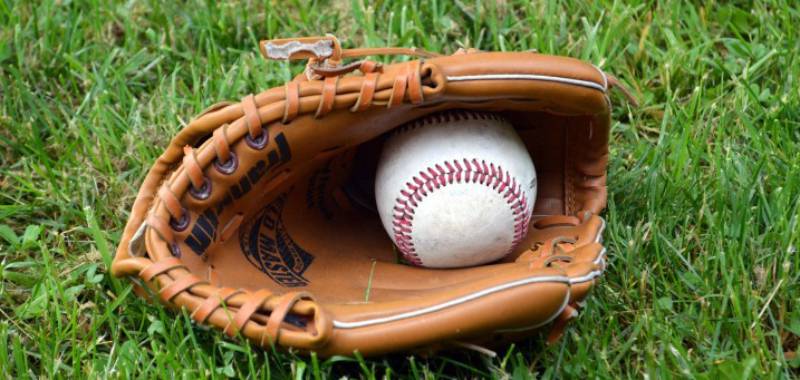
Article by John Matich
Babe Ruth is widely considered to be the greatest Major League Baseball player of all-time. He was so good that, when transferred from the Boston Red Sox to the New York Yankees, many came to refer to the Red Sox as cursed by Ruth himself.
A curse so strong that since losing Ruth in 1919, the Red Sox never won another World Series until 2004.
Not only could Ruth pitch, but he could hit with extreme style – often dazzling the crowd by blasting the ball out of the park, faster and with more dramatic timing than anyone had ever seen. So much so that sportswriter Tommy Holmes went on to write “Some 20 years ago, I stopped talking about Babe for the simple reason that I realised that those who had never seen him didn’t believe me.”
And he was an unbelievable player. In a sport that’s incredibly hard to be so.
But far from letting that discourage you, with the right practice, anyone could be on their way to walking in Ruth’s footsteps.
However, although you’d think baseball training starts with the bat and learning to blast home runs out of the park, as any American who grew up playing catch with their father tell you, it all starts with the glove.
General tips for buying a baseball glove
When buying a baseball glove you want to consider three things right away:
- What material is the glove made of?
- What position am I going to be playing?
- What hand do I throw from?
For the first question, you want the answer to be “as much high-quality, genuine leather as possible.” This will ensure the glove is durable, breathable, and comfortable where other synthetic gloves are not.
The second question will take a little more explaining -which I will do- but you want to bear in mind that not all baseball gloves are the same, and whatever position you’ll be playing determines the exact type of glove that you’ll need.
For the third question, you want to know what hand you throw from, as your glove will be worn on the opposite hand, and thus determine what type of glove you’ll need. This is designated on the product so make sure you choose the right one.
For right-hand throwers look for designations on the glove such as:
Right-hand thrower, left-hand catcher, left-hand glove, RHT, or LHC.
For left land throwers look for:
Left-hand throw, right-hand glove, LHT, or RHC.
What are the parts of a baseball glove?
First, we need to understand what a baseball glove is and how it comes together.
A baseball glove consists of six parts, the most important of which is the web, which gives the baseball glove its defining look. This is the woven piece of leather that connects between the fingers and thumb and allows heightened control over the ball.
Next, there is the palm, which is a padded, protected area that softens the impact of hard catches. Alongside this is the heel, which is at the bottom of the palm, and provides additional protection. Oil-treated, Premium, or Pro Series leather is what you want to look out for.
Lacing at the back the glove gives the glove its shape and can be tightened or loosened depending on preference. Next, there is the hinge of the glove, which allows it to open and close freely, and helps to secure the ball into the glove.
Finally, there is wrist adjustment, which is present on some gloves but not all, and allows for a tighter more secure fit where necessary.
What are the baseball glove web types?
Beyond picking a solid leather and a comfortable fit, you can also choose specific types of webbing that help to further enhance your game.
Fielders benefit from such patterns as the basket, trapeze, modified trap, H-web, I-web, single post, and two-piece. First Basemen typically use the single post, modified H-web, or the dual bar. And catchers usually opt for the half-moon or one piece.
Depending on your position you’ll want to use a style of webbing that assists you and then experiment from there.
What glove is best for my position?
As a catcher, you’ll want to use a fingerless glove with a large amount of padding to keep your hand from getting sore after catching each pitch. A deep shape to the glove will also help you catch more securely.
As a first baseman, you will want a large, wide glove that’ll help you scoop up balls from the dirt. As an Infielder, you will want a full, five-finger glove that helps you quickly transfer the ball. As an outfield, you will want a deep pocket to catch those big shots that go high and threaten to leave the park. For pitching, go for a glove that has a webbing that conceals the ball, and has less padding. After all, you won’t need it as much.
What size baseball glove should I buy?
Trying on gloves is always your best bet as everyone’s hands are different, and finding a comfortable fit goes a long way to helping you enjoy your game. However, as a general rule, these sizes are recommended:
First basemen – 12 to 13-inch glove.
Infields – 11.25 to 12-inch glove.
Outfielders – 12 to 12.75-inch glove.
What are the best baseball glove brands?
There are many different brands of baseball gloves, and while the right webbing style and size are the most important factors, in my experience, a good brand goes a long way in ensuring a high-quality glove.
The three best baseball glove brands are Rawlings, Mizuno, and Wilson.
Recommendations
Here are my recommended baseball gloves:
UK
USA

